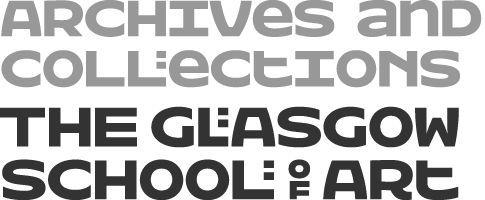Key Information
Type of entity
Person
Authorized form of name
Armour, Mary
Parallel form(s) of name
Standardized form(s) of name according to other rules
Other form(s) of name
- Steel, Mary Nicol Neill
Identifiers for corporate bodies
Description area
Dates of existence
1902-2000
History
Mary Nicol Neill Steel was born in Blantyre as one of 6 children of a local Steelworker. She attended Hamilton Academy, where her talent was recognised and encouraged by the art mistress, Penelope Beaton (who later went on to teach at Edinburgh College of Art). The training that Mary received whilst at Hamilton Academy would have stood her in good stead when she started her training at Glasgow School of Art.
For her first two years at Glasgow School of Art, Mary Armour spent her time on a General Course that included classes in Design, Leatherwork, Embroidery, Metalwork, and Drawing and Painting. This was not uncommon at this time, with students deciding upon their specialism after the second year. She concentrated on Painting.
When Mary Armour attended Glasgow School of Art the head of painting was Maurice Griffenhagen, assisted by David Forrester Wilson. These two men would have had contrasting and valuable influences upon the work of many students of the school at this time, and this can be seen in some of Mary Armour's early work. However, this is not to say that she did not have a very distinctive style of her own. Indeed, her diploma show exhibition showed an unusual break from tradition. It is probably this boldness and break from tradition that prevented Mary Armour from obtaining the Newbery medal, for the "Most distinguished Student of the session completing the diploma course"; Charles C. Baillie instead being awarded it. However, in 1924 (the year she was granted her diploma) she was successful in winning a maintenance bursary worth £66; one of just 3 Drawing and Painting students to be so recognised. That year only 26 students out of the 33 students who submitted work for the diploma examination were successful. This is despite the assessors' report that was published in the Glasgow School of Art Annual Report, 1924-5, stating that the teaching of drawing and painting in the school was at this time "excellent and inspiring".
After obtaining her diploma from Glasgow School of Art, Mary Armour took a post-diploma year of professional training to become qualified as a Teacher of Drawing under the regulations of the Scottish Education Department. This led her to take up school teaching in the Glasgow area. As was the lot of newly-married women teachers at this date, she was forced to resign upon her marriage to William Armour (whom she met whilst at Glasgow School of Art) in 1927. This however, did afford her more time to devote to her painting, and it was in this year that she received the Guthrie Award at the Royal Scottish Academy.
In 1951, Mary Armour returned to Glasgow School of Art to teach still life. It was an association that lasted long after her retirement form teaching in 1962; in 1993 Mary Armour was created (along with David Donaldson) one of the first Honorary fellows of Glasgow School of Art. Mary Armour also served as a governor of the school from 1964-70, and in December 1982 she was elected Honorary President.
The Director of Glasgow School of Art Seona Reid perfectly sums up the contribution Mary Armour made to GSA and to the art world in general; Mary Armour may have been 98 when she died but her spirit was indefatigable. Even when she was well in to her nineties she took a lively and active interest in Glasgow School of Art where she had studied in the 1920's and of which she was Honorary President. She was one of Scotland's most famous women painters at a time when being taken seriously as a painter was already difficult far less as a woman painter. The exuberance of her work - her best known being those wonderfully colourful flower canvases - and the exuberance of her personality brought her through all potential barriers to an appreciative and adoring public.
GSA 1920-1925 (student)
1951-1962 (staff)
1964-1970 (governor)
Places
Legal status
Functions, occupations and activities
Mandates/sources of authority
Internal structures/genealogy
General context
Relationships area
Related entity
Identifier of the related entity
Category of the relationship
Type of relationship
Dates of the relationship
Description of relationship
Access points area
Subjects
Place access points
Occupations
Control area
Authority record identifier
Maintained by
Institution identifier
Rules and/or conventions used
Status
Level of detail
Processing information
Language(s)
Script(s)
Sources
- GSA Registers and Archives
- GSA Folio Magazine article, 1993
